Commercial Buildings
|
-
About this Collection
Although there have always been marketplaces, the concept of creating a distinctive building designed solely for business or commercial use was not common until the 19th century.
By the 20th century, American businessmen in particular had developed a taste for building prominent commercial buildings, many of them skyscrapers. From their beginnings in Chicago, skyscrapers achieved world attention and fame when New York interests competed to build the highest in the world, including the Woolworth Building, the Chrysler Building, and the Empire State Building.
Frank Lloyd Wright designed modern commercial office buildings, and even utopian visionaries such as Hugh Ferriss and Tony Garnier included distinctive commercial buildings in their futuristic schemes.
-
Chrysler Building in New York City drawn by Hugh Ferriss
Hugh Ferriss' rendition of the Chrysler Building in New York, one of the icons of skyscraper Art Deco architecture. Construction of the building was not yet completed, as indicated by the scaffolding and construction cranes visible at the top. This building overtook the Woolworth Building as the world's tallest when it was completed in 1930, but relinquished that crown four months later to the Empire State Building.
Image from The Metropolis of Tomorrow, Ferriss' atmospheric and visionary book of 1929.
-
Daytime view of the Woolworth Building in New York City
Architect Cass Gilbert (1859 - 1934) designed the Woolworth Building in New York, completed in 1913. It was famous as the tallest building in the world until the Chrysler building came along in 1930. He used the relatively new form of skyscraper, but embellished it with gothic ornamentation, hence its nickname 'The Cathedral of Commerce'.
Gilbert's work is known to St. Louisans through his designs for the St. Louis Art Museum and the St. Louis Public Library's downtown central library. Today he is probably best known for designing the Supreme Court of the United States building in Washington, DC.
Photograph from a booklet that served as a form of advertisement by the building's owner, published in 1918. Besides being its headquarters, the Woolworth company hoped to attract tenants and customers by showcasing the building's up-to-date amenities and beauty.
-
Frontispiece of The Cathedral of Commerce shows the Grand Arcade
The Grand Arcade of the Woolworth Building in New York City. This photograph was used as the frontispiece of the promotional booklet for the building, entitled The Cathedral of Commerce, published in 1918.
The Woolworth Building, completed in 1913, was designed by architect Cass Gilbert (1859 - 1934). It was famous as the tallest building in the world until the Chrysler building came along in 1930. Gilbert used the relatively new form of skyscraper, but embellished it with gothic ornamentation, hence its nickname 'The Cathedral of Commerce'.
-
Telephone Building in St. Louis, drawn by Hugh Ferris in The Metropolis of Tomorrow
The Telephone Building in St. Louis of 1926, now known as the Southwestern Bell building. Illustration from Hugh Ferriss' visionary book The Metropolis of Tomorrow of 1929. The author chose this building to begin his documentation of exisiting buildings, and is complimentary to its architects for their innovation and consideration of human elements in the design.
This building was designed by the firm of Mauran, Russell & Crowell. W. Oscar Mullgardt, a member of this firm, was chiefly responsible for the design of the Steedman Room.
-
Title page, The Cathedral of Commerce
The title page of the promotional booklet for the Woolworth Building in New York City. It proudly displays a heraldic design emphasizing 'The highest building in the world'.
This booklet, published in 1918, served as a form of advertisement by the building's owner. Besides being its headquarters, the Woolworth company hoped to attract tenants and customers by showcasing the building's up-to-date amenities and beauty.
The Woolworth Building, completed in 1913, was designed by architect Cass Gilbert (1859 - 1934). It was famous as the tallest building in the world until the Chrysler building came along in 1930. Gilbert used the relatively new form of skyscraper, but embellished it with gothic ornamentation, hence its nickname 'The Cathedral of Commerce'.
Gilbert's work is known to St. Louisans through his designs for the St. Louis Art Museum and the St. Louis Public Library's downtown central library. Today he is probably best known for designing the Supreme Court of the United States building in Washington, DC.
-
Modernist hotel in Garnier's utopian city of the future
A hotel for travelers constructed of concrete, located at the railroad station of Tony Garnier's visionary city of the future. This image is from his portfolio Une cité industrielle of 1932.
Garnier (1869 - 1948) was a French architect who pioneered the use of reinforced concrete and was a forerunner of modernist urban planning.
-
Frank Lloyd Wright's Larkin Building in Buffalo, New York, 1902
Exterior view and ground plan of the Larkin Company administration building in Buffalo, New York, designed in 1902 by Frank Lloyd Wright.
Wright later claimed that with this building, he successfully broke away from designing boxes for the first time. For this commercial building, he used vertical lines and a large centralized interior space. Wright's ornamentation, or lack of it, was a conscious rebellion against the prevalent use of revival styles in the United States, such as those practiced by Daniel H. Burnham. The building was demolished in 1950.
This plate is from the Wasmuth Portfolio of Wright's work (1910).
 View Image
View Image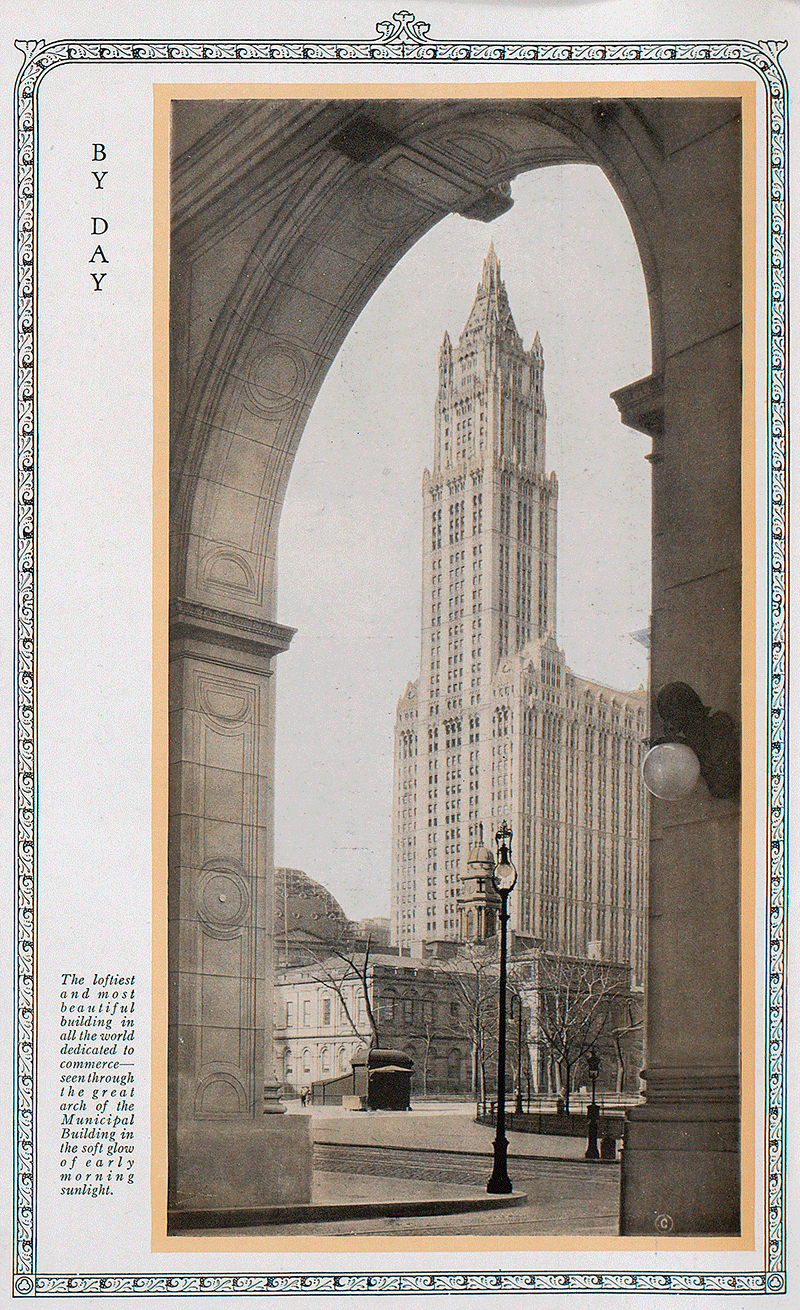 View Image
View Image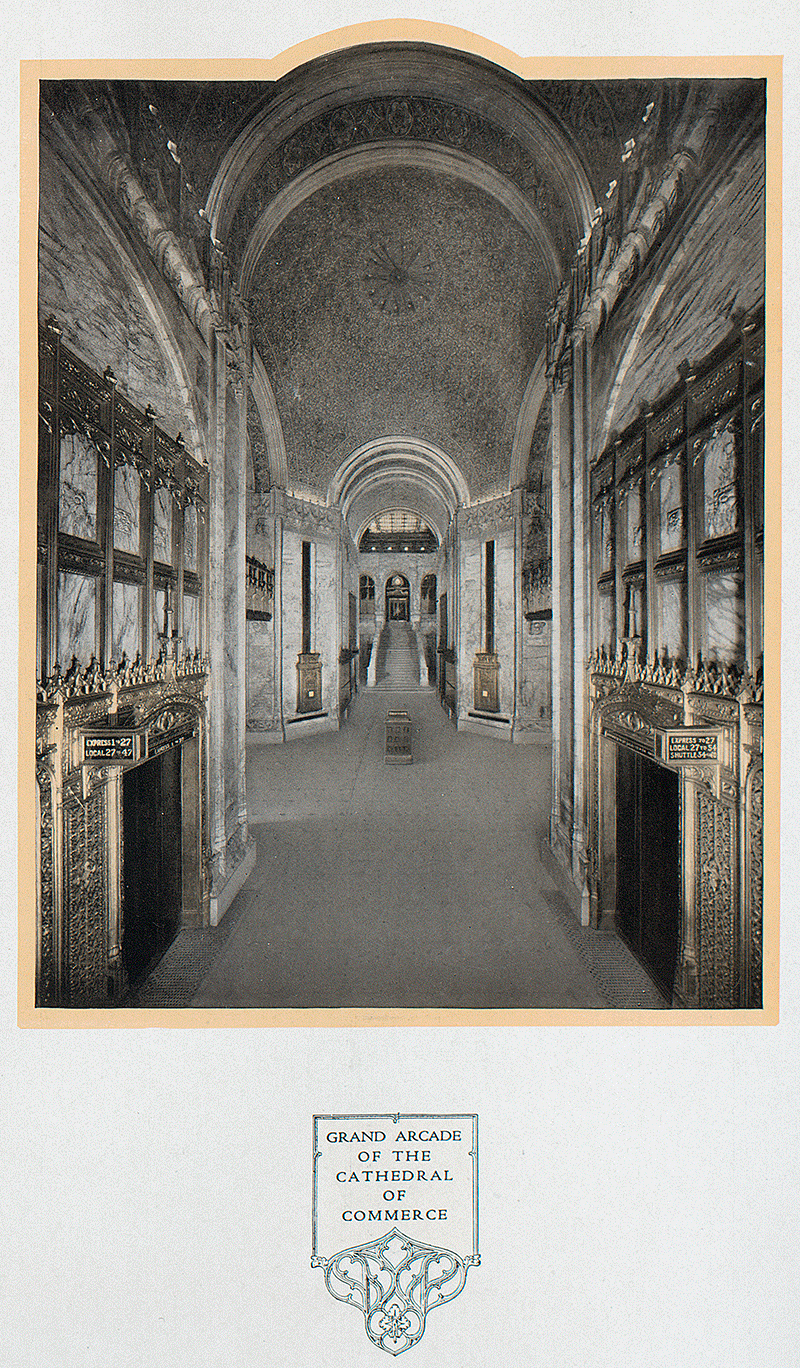 View Image
View Image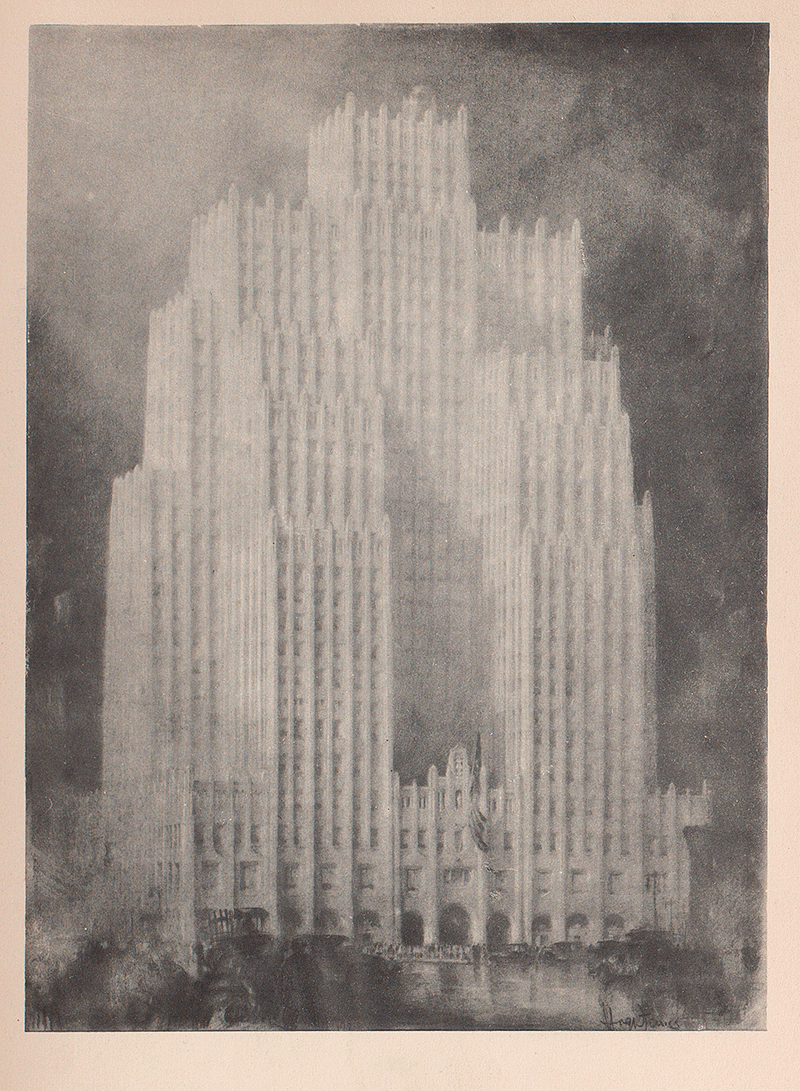 View Image
View Image View Image
View Image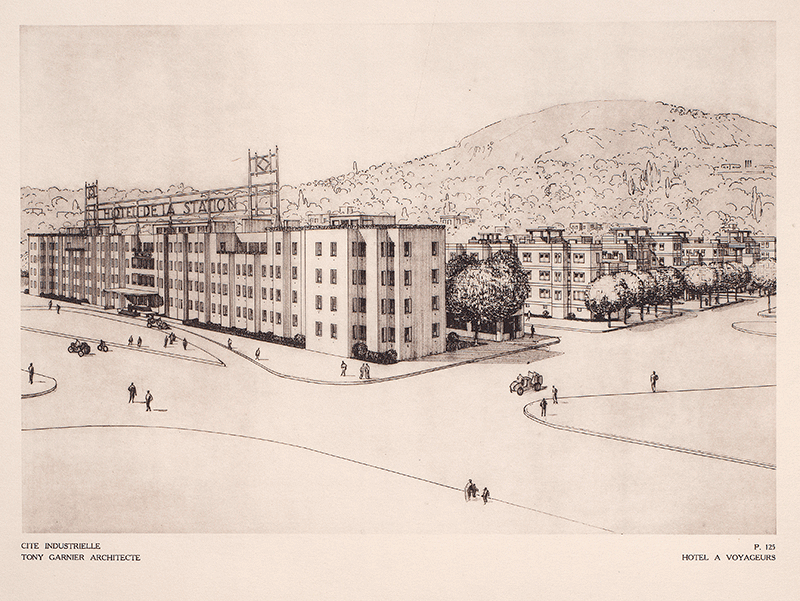 View Image
View Image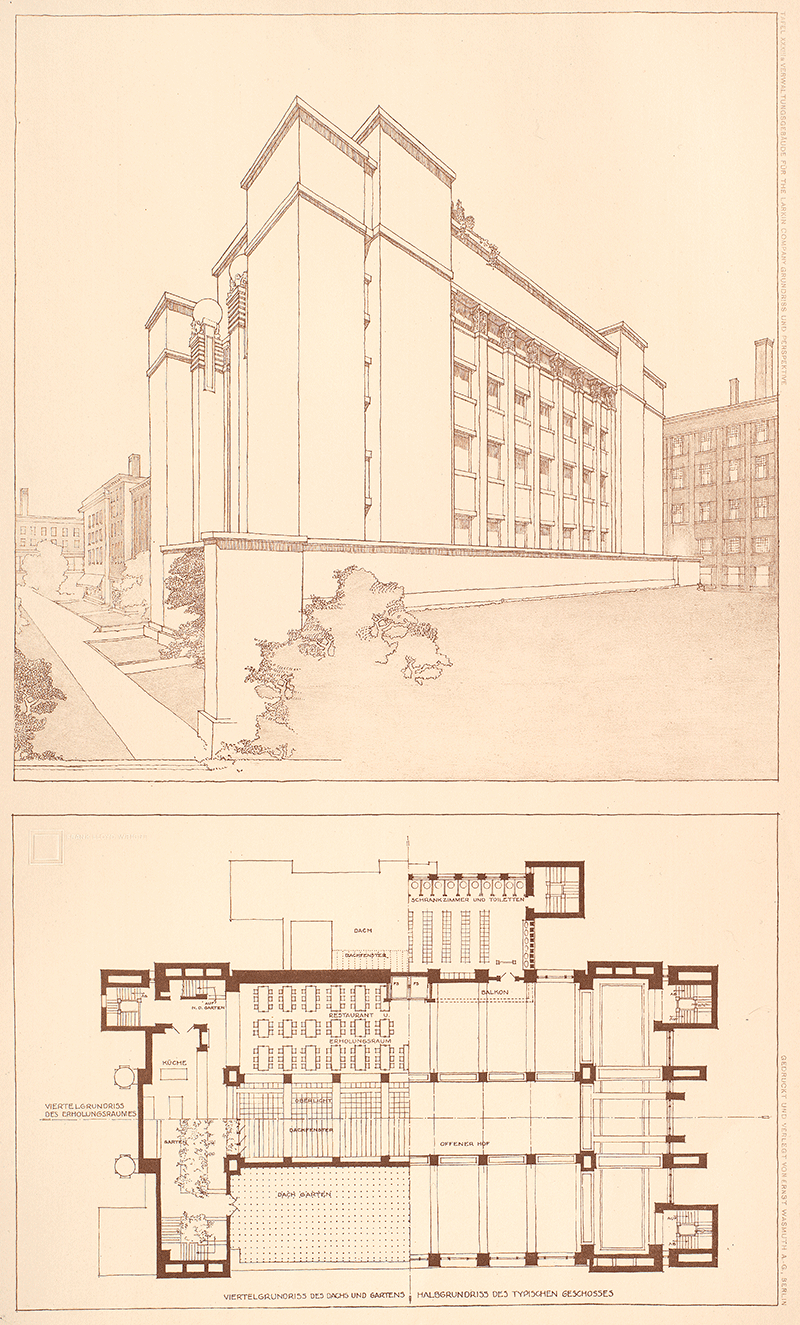 View Image
View Image